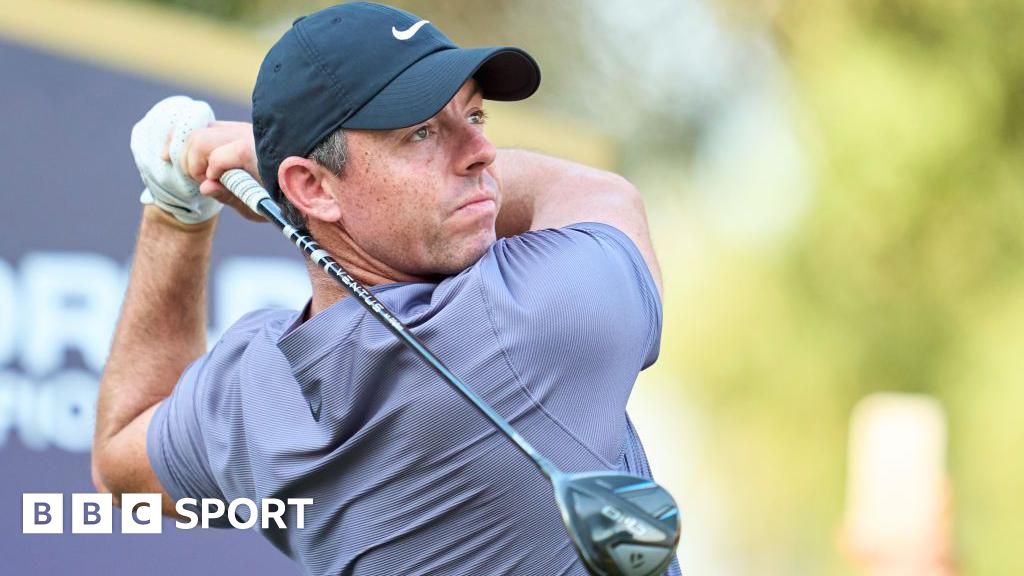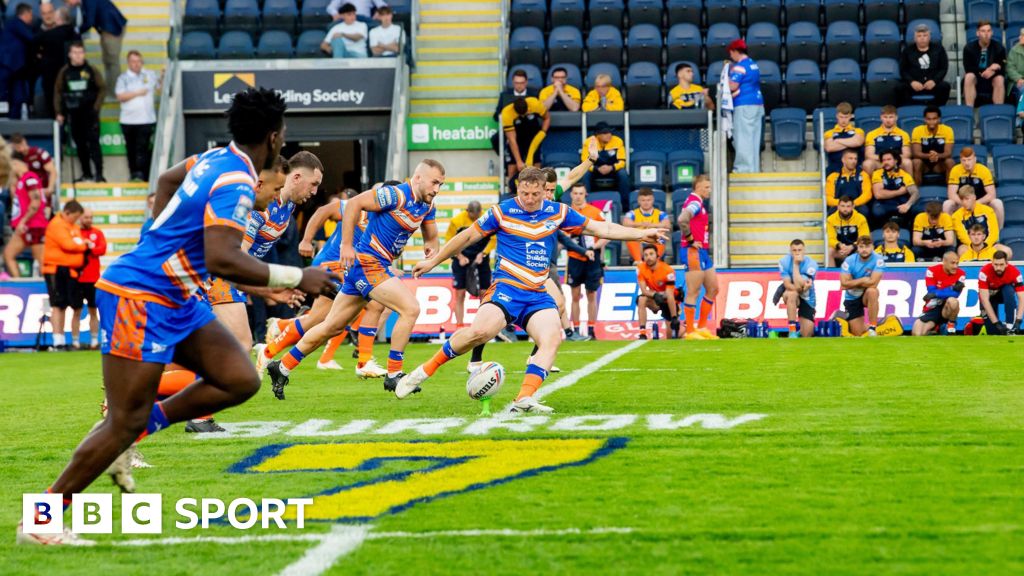ARTICLE AD BOX
Max Verstappen extended his championship lead over Lando Norris by winning the sprint race before finishing ahead of the Briton in Sunday's United States Grand Prix.
It was a controversial end at the Circuit of the Americas as Norris was given a five-second time penalty for overtaking Verstappen off the track.
The penalty meant Norris finished a place behind the Dutchman, in fourth, to now trail by 57 points in the drivers' championship.
BBC F1 correspondent Andrew Benson answers your questions after an eventful grand prix, which was won by Ferrari's Charles Leclerc.
If Lando Norris got a penalty for gaining an unfair advantage and passing Max Verstappen, why didn't Max get one for forcing another driver off the track? - Rob
This question goes to the heart of the debate over the rights and wrongs of the defining incident of the United States Grand Prix.
Lando Norris attempted to pass Max Verstappen around the outside of Turn 12. Both cars ended up running off the track. Norris got ahead and stayed there for the rest of the race. He was penalised five seconds for gaining an advantage by going off track, demoting him back behind Verstappen.
There are so many elements to this. The first is that, yes, Norris, in factual terms, undoubtedly gained an advantage after going off the track. This is the position of Red Bull and Verstappen, who felt it was a "slam-dunk" penalty.
Norris and McLaren's view is that he went off the track only because he was forced there by Verstappen.
This argument is that Verstappen, whether deliberately or not, ran right to the edge of the track on the exit of the corner, leaving Norris on his outside no option but to do the same. Norris could not turn more because if he did they would have crashed.
Verstappen definitely did do this. The question is whether he was entitled to. The stewards decided he was, because Norris was "not level with" Verstappen at the apex and therefore had "lost the right" to the corner.
This assessment comes from the drivers' overtaking guidelines, which is not a publicly available document. It states the driver on the outside in this sort of situation must "have the front axle at least alongside the front axle of the other car at the apex of the corner and to the exit" to be entitled to be afforded room.
McLaren's argument is this was an example of a standard operating procedure of Verstappen - throw his car up the inside and force the other driver wide - when he is defending, which is essentially unfair.
McLaren team principal Andrea Stella said: "The defending car goes just straight at the apex. We checked the video multiple times. It is just going straight. It is just going off the track as much as Lando is doing, just giving no chance for Lando to complete the manoeuvre.
"If I was a journalist, I would have done a bit of statistics how many times Max has used this way for defending."
What McLaren are essentially saying is Verstappen is 'gaming' the rules - driving to the letter, but in a manner many would consider not fair racing. It could be argued this is a flaw in the drivers' racing guidelines.
Another time Verstappen did this was Brazil 2021 against Lewis Hamilton. That was at much higher speed, so the danger was greater, but in that case most of the drivers felt Verstappen should have had a penalty after both drivers went off the track. He did not get one.
The other issue here is Verstappen was ahead at the apex, slightly, only because he had braked later than Norris, despite being on the dustier inside line where there would be less grip. Norris had previously nosed slightly ahead on the straight approaching the corner.
And the question that arises from that is whether Verstappen drove as the guidelines demand, in a "safe and controlled manner at all times", "forced the other driver off track" and was as a consequence "able to make the corner within track limits".
McLaren would contend that he did not comply with these requirements. But this was ultimately not considered relevant by the stewards.
Similar questions arise from the incident at the first corner, where again Verstappen was on the inside and both ended up off track on the exit.
Red Bull team principal Christian Horner said this would have been considered differently because on the first lap, and especially the start, more leeway is given and the fundamental default is "let them race".
However, it is easy to see why some have questioned the lack of consistency between the two incidents - and indeed with that at Las Vegas in 2023, when Verstappen was penalised for forcing another driver off the track at the first corner, in that case Ferrari's Charles Leclerc.
Driving in this way does make Verstappen very hard to overtake, especially on the outside.
How does a rival do it in a manoeuvre where the cars are more or less side by side, one might wonder, if he is highly likely to brake so late he will always be ahead at the apex, to ensure he complies with that requirement, and then force them wide?
It is expected the drivers will discuss some of these issues in their briefing at the Mexican Grand Prix this weekend.
Why are circuits allowed to have such large run-off areas when it causes the sport more harm with conflicting judgements from stewards? – Jen
The issue here is not the size of the run-off areas - that is for safety - but what they are made of, and the general question of track designs.
Many circuits these days - and Austin is one - have to balance what F1 would like in an ideal situation with their wider requirements.
So, F1 might prefer higher kerbs, or gravel traps, or a different surface on the outside of the corner, so that these track limits issues do not cause so many problems. In essence, for F1, it would be better to have a physical impediment to going off track, one that automatically ensures the driver loses out. (Although this would raise further issues with the racing question above.)
But F1 rights fees are expensive, and circuits have to be viable businesses. So they have to take into account other categories and circumstances.
In MotoGP, the riders do not like gravel or raised kerbs - they hurt more if they crash. So they went asphalt run-offs and flat kerbs. Equally, gravel is not ideal for track days, when members of the public take their cars on to a race track and pay to drive around, because their cars get stuck in it, and sessions have to be stopped to drag them out.
As Max Verstappen said after the race on this matter: "[Gravel might help, but we have to deal with bikes as well that race here. They don't like the gravel, so then you have to remove it again.
"People spin off, of course, on track days. You have amateur drivers, professional drivers. It does cost a lot of money when you have to do that, and not every track can do that throughout the year. Yes, it would work, but on the other hand, I'm not sure how sustainable that is for the season.”
I have been alarmed by some of Lewis Hamilton’s mistakes and results throughout the season. Is there a feeling he is starting to decline? – Elliott
This question reflects, presumably, a difficult weekend for Hamilton and Mercedes in Austin. He had a spin at Turn Three in practice, and another at Turn 19 in the race.
Hamilton sounded befuddled by the incident in the race. "I have never spun [in the race], especially on the second lap,” he said.
Team-mate George Russell backed him up.
"When we are in the [set-up] window, we are there,” Russell said on Sunday. “And when we're not, it bites. It happened with me yesterday and you saw it with Lewis today. He never makes mistakes and the car just goes on us from nowhere.”
The initial conclusion was that Hamilton's incident - and Russell's crash at Turn 19 in qualifying - were caused by a problem with the car.
“I wasn’t even pushing at that point,” Hamilton said. “I was just trying to get going. The front started bouncing and the rear end just came around, same as George yesterday.
"P1, I had the same thing, spin in Turn Three, which is so rare. I have never spun in Turn Three all the years I have been here."
Hamilton's suspicion was that the incidents were caused by the upgrade Mercedes introduced in Austin - and this feeling was enhanced when Russell drove a strong race, from the pit lane to sixth, after being forced to use an older-spec car following his crash because there were not enough spare parts of the newer one.
And Mercedes team principal Toto Wolff said he did not think the incident in the race was Hamilton's fault.
"It came out of nowhere," Wolff said. "He was not pushing at all. Where I sit at the moment it is 100% not Lewis' fault. And it's not because I am protecting him. It’s clear. It was gusty, there was a slipstream, how does all that interact?"
After their strong performance in Texas, which of the remaining races are expected to suit Ferrari? – Andrew
Ferrari were very encouraged by their performance in Austin. They have been very strong since they put a new floor and other new parts on their car at the Italian Grand Prix.
Charles Leclerc won at Monza, was a close second to McLaren's Oscar Piastri in Baku, where he arguably should have won, and was the second fastest car in the race in Singapore, climbing to fifth after starting 10th because he went off on his only qualifying lap.
But all those are circuits where Ferrari expected to be strong, because their characteristics - predominantly slow corners - play to their car's strengths.
So Ferrari were keen to see whether this improved performance would translate to Austin, where, yes, there is a lot of braking into slow corners, but there are also high and medium-speed corners where Ferrari are not usually as strong.
So the fact they were so competitive in Austin suggests they have made a holistic step forward.
Leclerc is now talking about winning the constructors’ championship. Ferrari are currently third, 48 points behind leaders McLaren. It won’t be easy, but you can see why they think it’s possible.
What are the pros and cons of teams no longer having a third (spare) car? And would you like to see them reintroduced? – Roy
Spare cars were banned in F1 in 2008 on costs grounds. But the rules still allow for teams to have enough parts to build up an entire new car if necessary.
Pretty much anything can be repaired or replaced, as long as there is the time - and inclination - to do so.
There is no desire in the sport to go back to the previous system, when fully built-up spare cars were permitted.

 3 weeks ago
9
3 weeks ago
9








 English (US)
English (US)